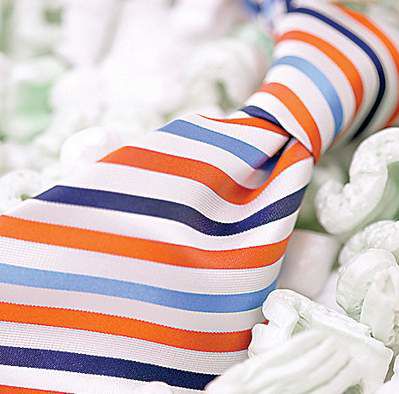Eco-packaging fails to flush
Published 4:00 am Wednesday, January 7, 2009

- Raleigh, N.C., is the latest city to ban the biodegradable packing peanuts. The alternative to Styrofoam turns into sludge, clogging pipes.
RALEIGH, N.C. — That holiday gift from your tree-hugger friend may contain a hidden danger: biodegradable packing peanuts — a menace to plumbing pipes everywhere.
A public utilities crew in Raleigh, N.C., tested the popular cornstarch packaging and discovered that, contrary to the advertising, they do not dissolve in water.
Trending
“They actually required agitation,” said Dale Crisp, the city’s public utilities director. “We were stirring vigorously, and even when we did so overnight, they did not completely dissolve.”
That means the eco-friendly peanuts can gum up the city’s sewer lines when poured, flushed or dumped. The city suggests you save them to reuse instead, or drop them in the landfill to slowly trickle out of existence.
Sewer overflows are a big enough problem in Raleigh that in 2000 the city created “Neusie,” a fish mascot, to educate residents on proper grease disposal.
That same clog-fighting zeal led Raleigh’s City Council to pass a ban on the installation of new garbage disposals earlier this year, a prohibition that was quickly repealed after much public outcry and ridicule. Raleigh had 53 such backups in 2006, below average for a city its size, but still a mess.
Crisp said the city’s eco-peanut stance came through laboratory testing; there hasn’t been a blockage specifically tied to the starchy puffs. But just like Kleenex down the toilet, he said, they just aren’t meant for flushing.
“The city’s position is and has been for many, many years that there’s three things that should be flushed down the toilet: human waste, used water and toilet paper,” Crisp said.
Trending
Cornstarch packing peanuts were developed as an alternative to Styrofoam, which can last 500 years in a landfill without breaking down. Some cities — Portland and San Francisco among them — have banned the long-lasting polystyrene foam.
Pour water over the corn peanut, and it turns to a thick bubbly broth, which is billed as toxin-free.
Staples carries such peanuts, but a spokesman didn’t return calls last Monday. Neither did a representative for Waukegan, Ill.-based Uline, which manufactures a line of them.
Cary, N.C., hasn’t seen any peanut-related blockages, said utility pretreatment technician Donald Smith, but it’s not unimaginable. You wouldn’t want to pour a box of cornstarch down the drain.
“You could have some clumping,” he said. “It would combine with the water and cake. It’s typically a thickening agent, used for gravies and starches in cooking.”
Well, where then?
Crisp noted that you could always toss dissolved starch peanuts in a compost pile or spread them as fertilizer over a lawn or garden. Packaging stores would be happy to have extra.
But it is cornstarch, after all, and it makes a tasty biscuit. At least one gourmand has tucked into a plate of peanuts.
“The packing peanut basically tasted like an unflavored cheesy poof,” writes the author of the Cupcake Project blog based in St. Louis. “In fact, if you put cheese on it and stuck it in a party bowl, I think people would eat these things up.”
But if you experiment with cheese peanuts and your stomach gets queasy, don’t run for the bathroom. Head for the back porch instead.








